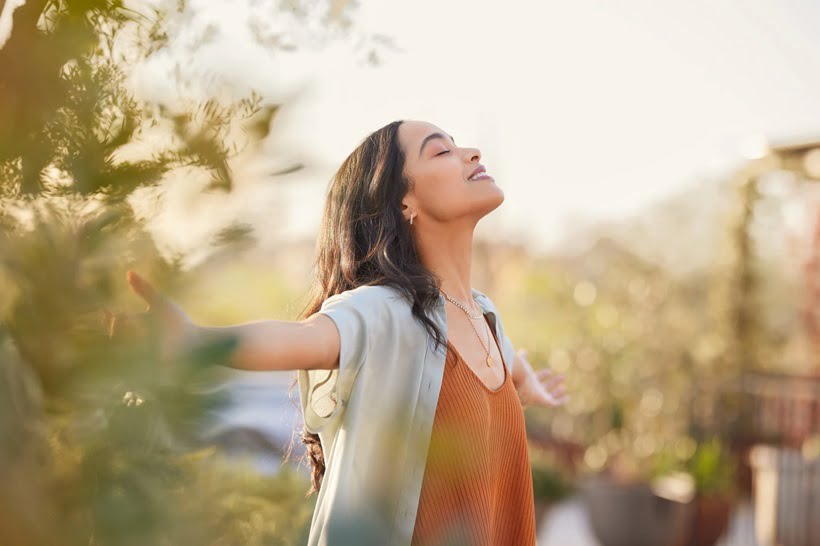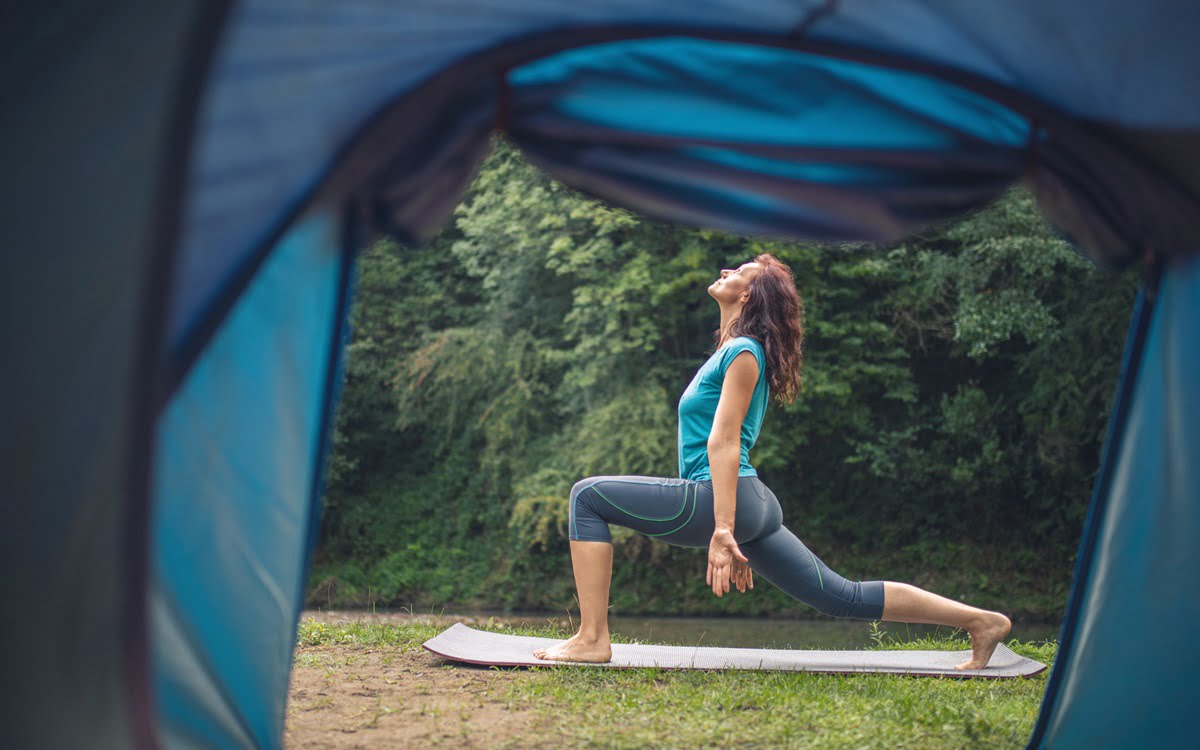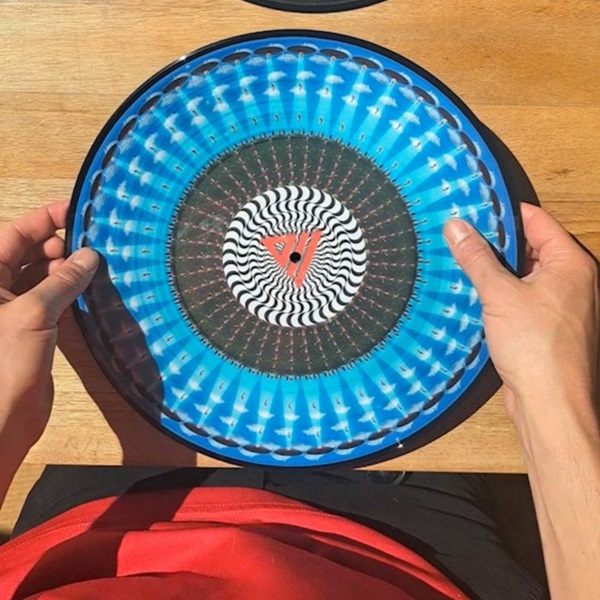
Yoga and traveling are a perfect combination for maintaining physical and mental well-being on the go. If you are a traveler, hiker, or camper, you may wonder how to do yoga when traveling. But believe us, you can do and enjoy both!
Whether you are exploring bustling cities or remote natural landscapes, yoga offers a way to stay grounded, flexible, and balanced amid the excitement and uncertainty. Practicing yoga when traveling not only helps relieve tension and stress caused by long journeys, but it also deepens your connection with new environments and cultures.
Isn’t it exciting to discover your body, your mind, and nature at the same time? If you wonder how yoga and travel can become your greatest companions, keep reading!
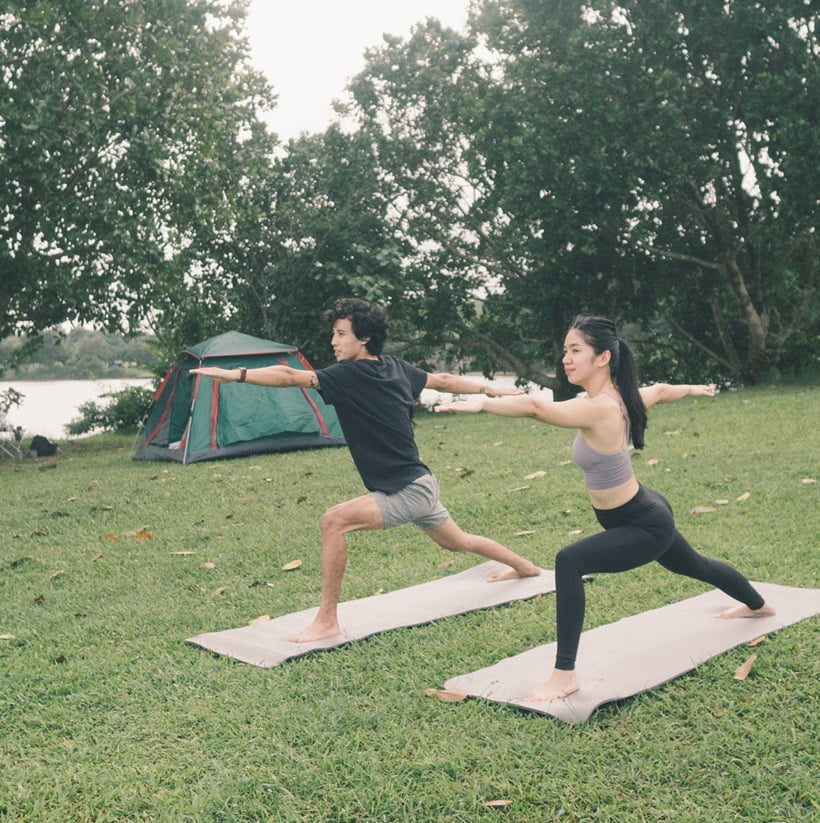
Aspects of Yoga
Yoga when traveling invites practitioners to embrace the core principles of mindfulness, self-awareness, and balance in diverse settings. The essence of yoga remains rooted in connecting with your inner self.
Key principles include creating a peaceful, distraction-free environment, which can be anywhere quite, and studying yourself through reflective practice. By tuning into your body’s needs and practicing patience, you can align your travel experiences with the teachings of yoga for a more fulfilling journey.

5 must-know aspects of yoga that will be helpful during your camping or traveling are:
Svadhyaya (Self-Study)
This refers to the practice of introspection and mindfulness, encouraging you to observe your thoughts, emotions, and physical sensations without judgment.
Pratyahara (Withdrawal of Senses)
This aspect involves detaching from external distractions, allowing you to focus inward, even in noisy or chaotic environments during travel.
Santosha (Contentment)
Finding contentment in the present moment, regardless of the challenges or discomforts that come with traveling, is essential to maintaining a peaceful state.
Asana (Physical Postures)
Practicing various yoga postures helps maintain flexibility and strength, making it easier to cope with long flights, bus rides, or walking tours.
Pranayama (breathing control)
Controlled breathing techniques can calm the mind, reduce travel-related stress, and energize the body for the journey ahead.

How to Do Yoga When Traveling?
Yoga when traveling, especially when camping, offers a way to connect with nature and maintain your practice on the road. The beauty of yoga is its adaptability. Yoga allows you to practice wherever you are, even in remote outdoor settings. With minimal space and equipment, you can easily incorporate yoga into your camping.
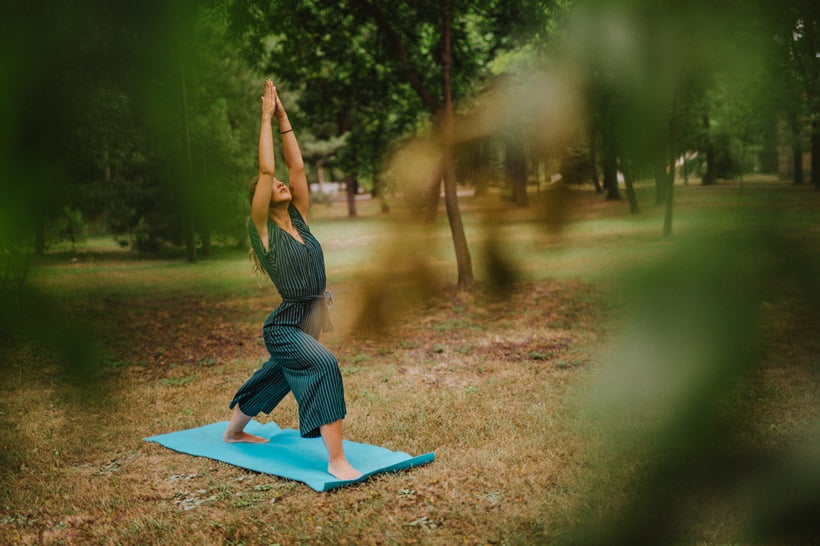
Pack a Lightweight Yoga Mat
To stay healthy when traveling, yoga can be the best and most minimalist option. To start, you should choose a travel-friendly, foldable yoga mat that is easy to carry. This creates a clean and comfortable surface for your practice.
Practice Early Morning Yoga
When traveling, you wake up early in the morning. Because nature wakes you up. In these mornings, you can take advantage of the calm and quiet of early mornings at your campsite. The best time to connect with nature, absorb fresh energy, and focus on gentle stretches that prepare your body for the day’s outdoor activities.
Use Nature as Inspiration
You are in nature, and you can take advantage of the beauty of the landscape. For example, you can find a scenic spot at your campsite—near a river, under a tree, or by a lake—to enhance your practice. Being surrounded by nature boosts relaxation, helps you stay present, and improves your awareness of the environment around you.
Keep Your Practice Simple
If you have limited space, you can stick to foundational poses like Downward Dog, Child’s Pose, and Cat-Cow. Because these poses do not require much space. Additionally, these poses help stretch tired muscles after long hikes. You should try to keep the practice gentle to avoid overexertion while traveling.
Incorporate Breathing Exercises
While listening to the sounds of the outdoors, take a few minutes to focus on your breath. For example, doing yoga when traveling can easily incorporate breathing exercise such as pranayama (controlled breathing). Such exercises help you calm your mind and reduce stress while camping.
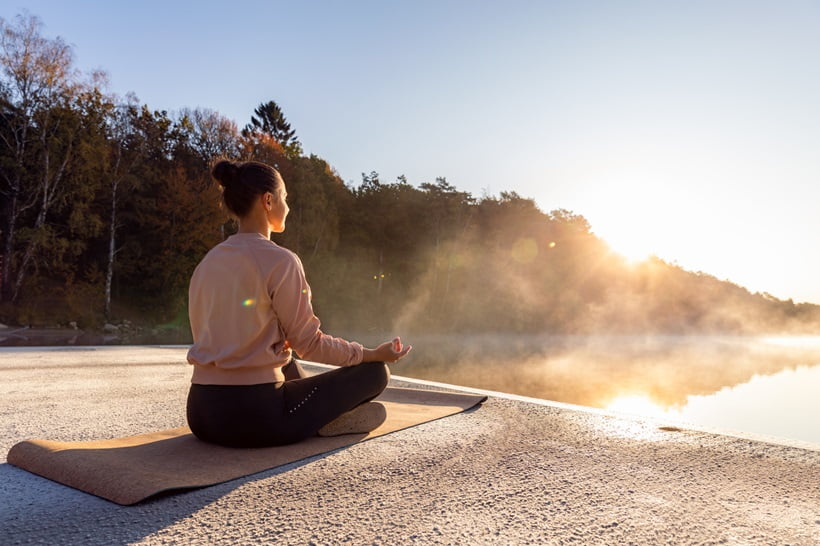
Create a Routine
Establishing a simple yoga routine while camping keeps you grounded. Start with a short session of 10–15 minutes every morning or evening. Consistency is key, and this routine will help you stay focused and flexible throughout your trip.
Use Props from Nature
Rocks, logs, and trees can serve as yoga props. Use a tree for balance during standing poses or a smooth rock as support during seated postures. This interaction with nature deepens your connection to your surroundings and enhances your practice.
Stay Hydrated
Whether you are practicing yoga or hiking, hydration is essential. Drink water before and after your yoga sessions to keep your body energized and maintain muscle flexibility. Being in the elements can increase dehydration, so always have water on hand.
Focus on Mindfulnes
Camping offers an ideal setting to integrate mindfulness into your practice. Take time to meditate after your yoga session, focusing on the sounds of nature and your breath. This helps ground your mind, offering clarity and relaxation during your travels.
Strecth After Outdoor Activities
After a long hike or day of exploring, a quick yoga session can relieve muscle tension and soreness. Focus on stretches that target your legs, hips, and back to promote recovery and prepare your body for the next day’s adventure.
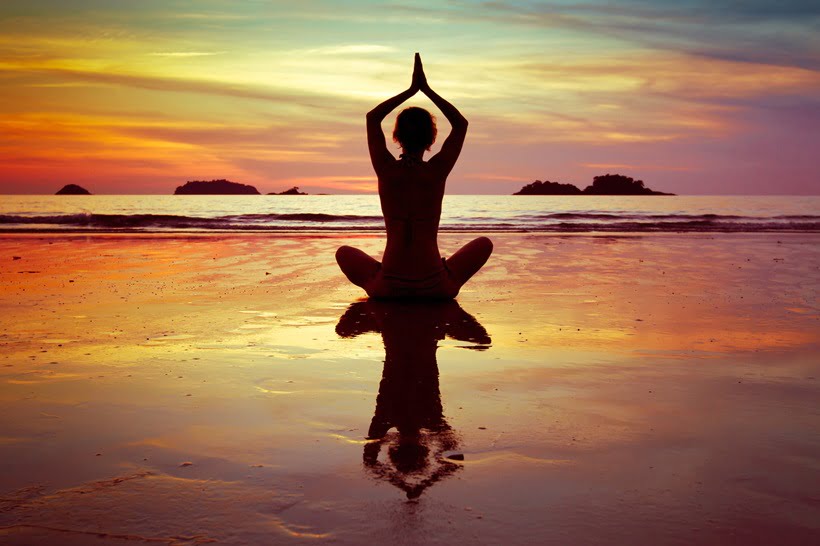
Other Ways to Exercise Your Mind
Yoga when traveling is an excellent way to keep your body and mind in sync. However, it is not the only way. Or, you might not have space to do yoga in peace. For travelers seeking other ways to stay mentally sharp and present, several practices can help you exercise your mind without the need for physical yoga poses.
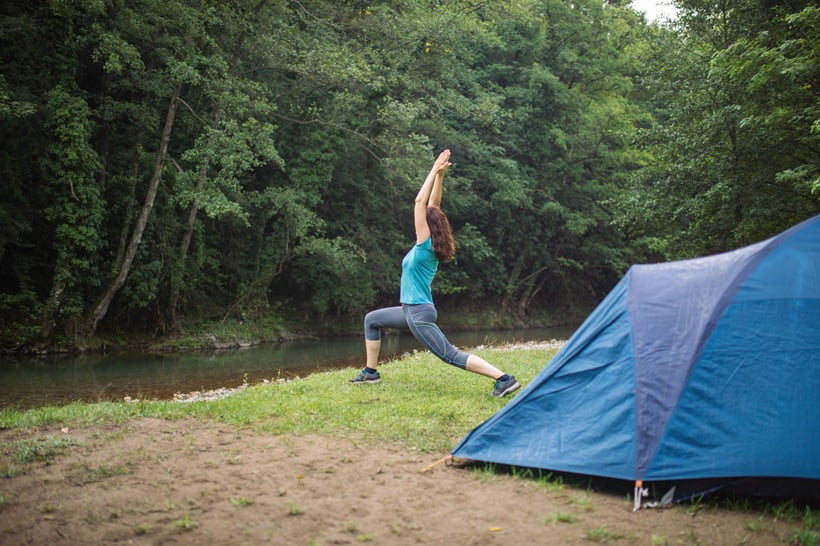
- Meditation
- Journaling to reflect experiences
- Mindful walking by focusing each step
- Reading inspirational books that inspire personal growth
- Listening to podcasts for self-development
- Creating visualizations of goals and aspirations
- Breathing exercises to calm the mind
- Mind games and puzzles like crosswords, Sudoku, or brain teaser apps
- Observational mindfulness to enhance awareness and appreciation of the present moment
- Taking time to mentally list or write down things that you are grateful for
